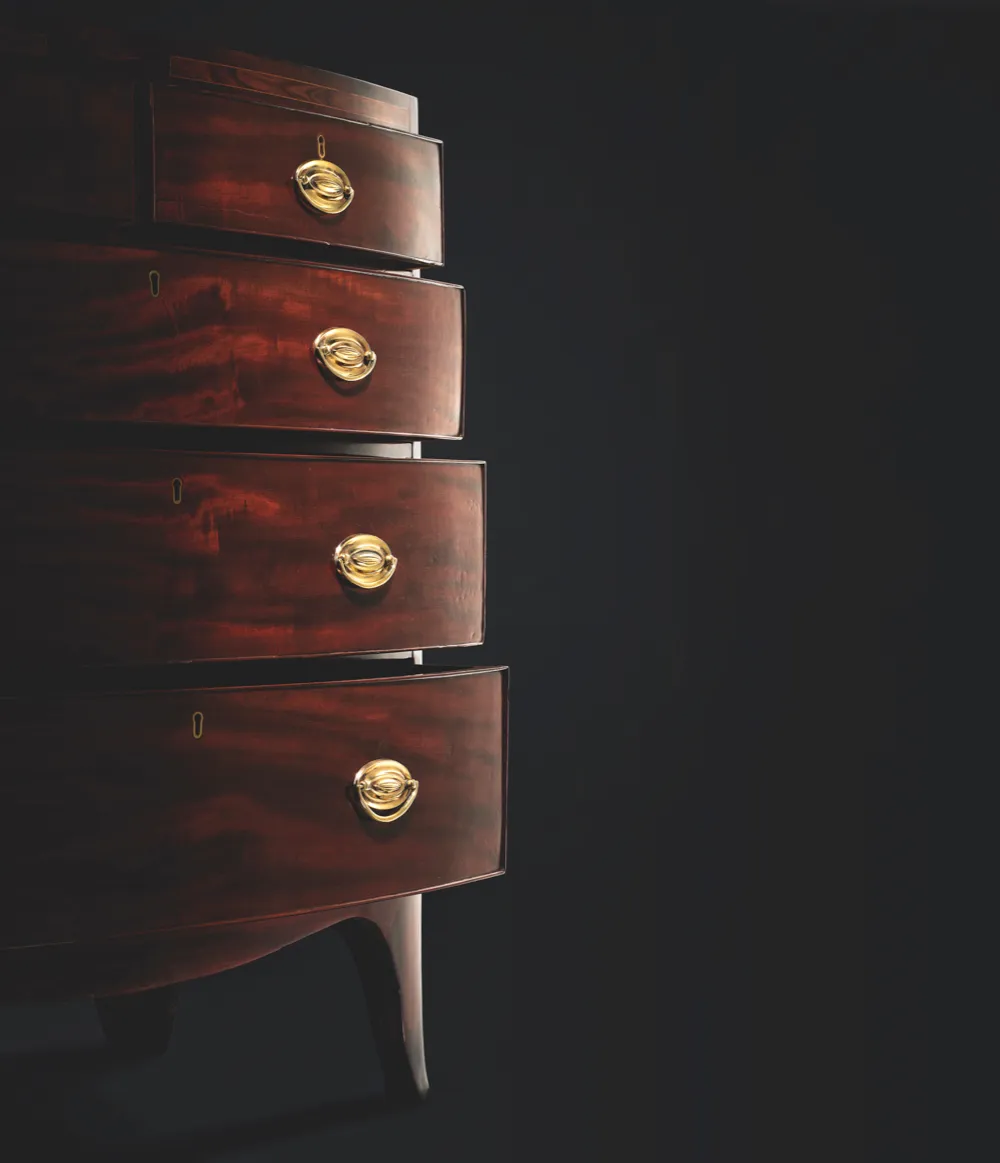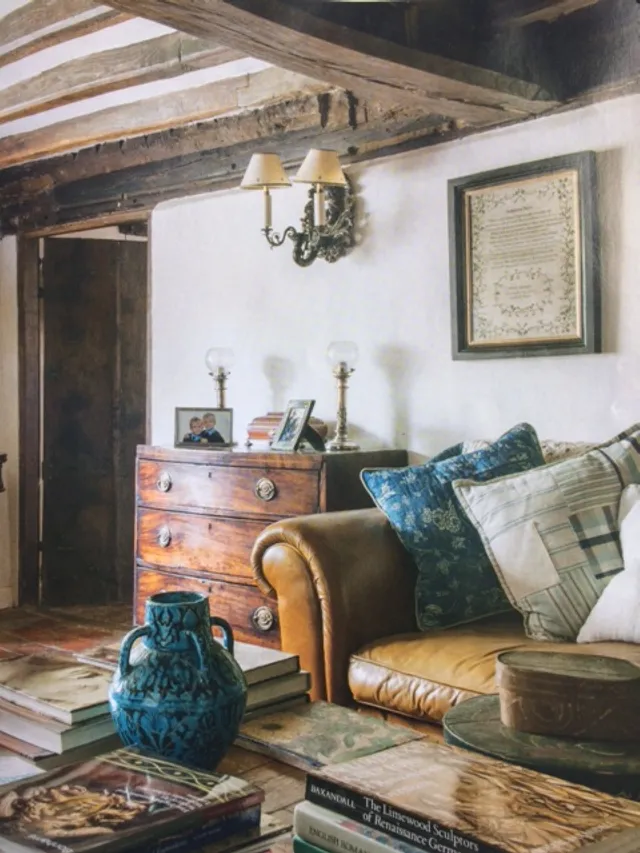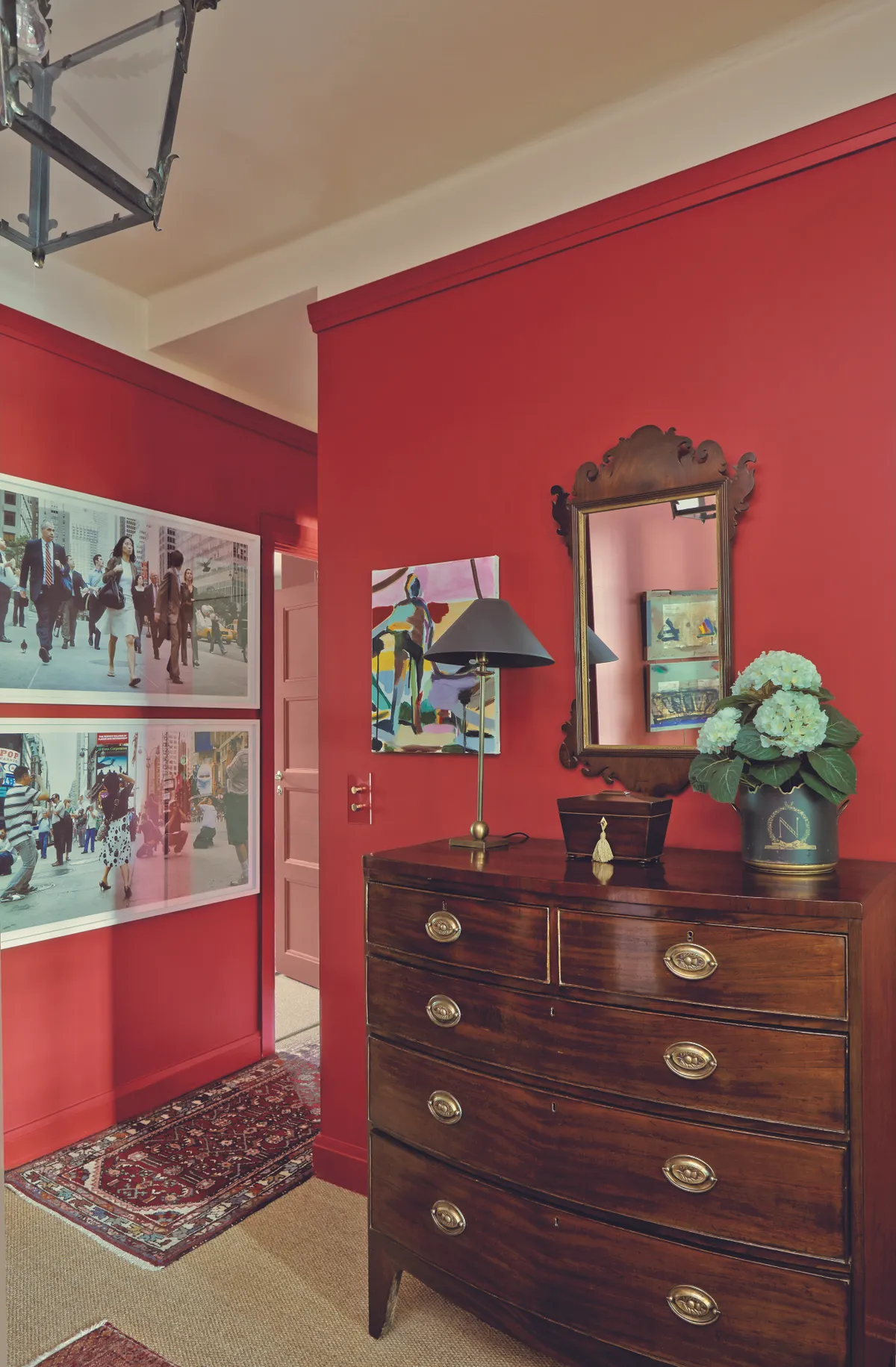The bow-fronted chest of drawers first emerged in the late Georgian period. It was a functional, confident design that appealed to the growing middle classes and became a solid middle-market staple of practicality and beauty that is still sought out today! Here we explore the history of the design, and how you could style a Georgian bow-fronted chest of drawers (or a similar antique piece) in your own home...
What does a Georgian bow-fronted chest of drawers look like?
Over the years of the Georgian period (from 1714 to c1830-37), furniture styles varied ugely, but it is perhaps the simple, elegant neoclassical styles ofthe mid 18th century onwards that mostly come to mind when we think of classic Georgian design. These were pieces distinguished by their craftsmanship and quality of materials. Mahogany was the wood of choice and chests of drawers often featured the Chippendale characteristics of fat or serpentine fronts, shaped bracket feet and ornate brass handles and keyholes. As the century wore on, demand for practical, good-quality furniture increased from the burgeoning middle class and, as the Hepplewhite style superseded Chippendale, the chic and functional bow-fronted chest took centre stage. Usually made of mahogany, sometimes with marquetry or cross-banding in other woods, it featured graduated drawers, splayed feet, brass handles and often a brushing slide (pull-out shelf). Thanks to its usefulness and beauty, it was embraced by homemakers and remains a design that is still much admired.

Who made and designed the Georgian bow-fronted chest of drawers?
Along with Thomas Chippendale, Thomas Sheraton and Robert Adam, George Hepplewhite was one of the masters of Georgian design. Little is known of the man himself, but he is believed to have served his apprenticeship at Gillows of Lancaster, before setting up as a cabinetmaker in London. A contemporary of Chippendale, he died in 1786 (seven years after Chippendale), but it wasn’t until 1788 that his widow, Alice, posthumously published The Cabinet-Maker and Upholsterer’s Guide featuring almost 300 of his designs. The Hepplewhite style is graceful and elegant, favouring geometric shapes and straight or tapered legs. Common decorative motifs were swags, feathers, urns and wheatsheaves. One of his best-known designs is the shield-back chair, but he also popularised the short chest of drawers and the sideboard.
3 ways to style
Take inspiration from these beautiful houses and explore how you could display a Georgian bow-fronted chest of drawers in your own home
Situate the chest of drawers as a focal point in the room
A bow-fronted chest is such a handsome piece of furniture that it deserves a prominent position, where it can be admired by all. Tucked neatly into an alcove in the living room, as shown below, it will provide valuable extra storage too.

Create a countryside feel with rustic textures
For understated country elegance, pair the lovely patina of Georgian mahogany with exposed beams and whitewashed walls. In this room, the chest adds a hint of luxury to the rustic scheme, while splashes of blue pull the look together.

Use bold paint colours to allow the chest of drawers to shine
Red was a popular choice for walls in the Victorian era, during which these chests continued to be produced. Show off your statement piece of furniture, in an equally statement hall, painted, like this one, in Blazer Modern Emulsion by Farrow & Ball.

Where can I buy a Georgian bow-fronted chest of drawers?
Georgian furniture has never been more popular! Herewe explain how to buy a real Georgian piece, and the best antiques dealers to buy from.
